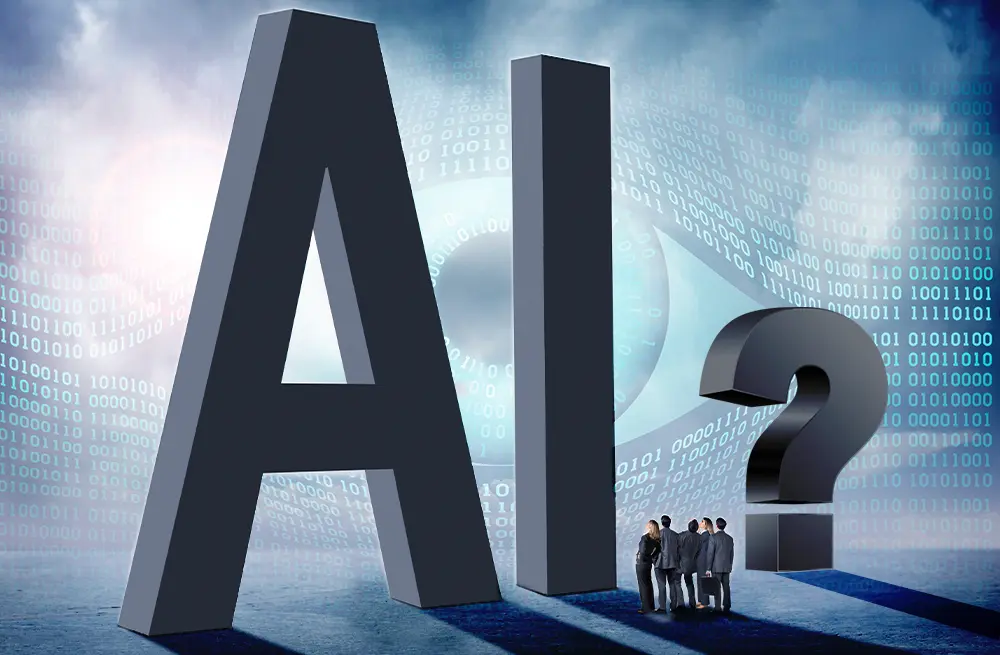Artificial intelligence (AI) is the process by which machines can think, learn and do things that would normally require human intelligence. This technology is used in many aspects of modern life, from simple daily tasks to complex business processes. Artificial intelligence (AI) refers to creating machines that can do things like think, solve problems, and understand words.
1. The Main Idea Behind Artificial Intelligence:
Machine learning is one of the most important parts of artificial intelligence. This technology allows algorithms to learn from data and get better over time, even if they are not programmed to perform a particular task. There are three main types of machine learning: supervised learning, unsupervised learning, and reinforcement learning. Supervised learning involves training models based on labeled data; unsupervised learning is about finding patterns in data that has not yet been labeled; in reinforcement learning, agents learn by interacting with the environment and are rewarded or punished based on their actions.
2. Brain-Inspired Computing and Learning by Doing:
Neural networks based on the structure and function of the human brain are an important part of artificial intelligence. They consist of nodes, or ‘neurons’, that are connected together and process messages before sending them to higher layers. Deep learning is a branch of machine learning that uses deep neural networks, which are multi-layer neural networks. This approach allows AI systems to describe complex patterns and make highly accurate predictions.
3. Natural Language Processing:
Natural language processing (NLP) studies how machines and humans talk to each other. NLP enables computers to understand, analyze and create human language. This enables chatbots, language translation and sentiment analysis. Token segmentation, part-of-speech tagging and named entity recognition are some of the techniques used in NLP that help in processing and studying textual material.
4. Computer Vision:
Artificial intelligence, also called live computer vision, seeks to enable machines to understand and analyze visual information from the world, such as images and videos. Image recognition, object recognition and facial recognition are all part of this technology. Computer vision is used in many areas, such as security systems, medical imaging and self-driving cars.
5. Things to Consider When Using Artificial Intelligence:
As AI systems improve, ethical issues become more important. Concerns about privacy, security and the potential for unfair decisions are important issues. For responsible creation and implementation, it is important to ensure that AI systems are open, accountable and fair. To address these ethical issues, rules and instructions for the use of artificial intelligence need to be developed.
6. How AI is Used in Different Areas?
Artificial intelligence has a significant impact on many fields. Artificial intelligence is used in healthcare to diagnose diseases, guess how a patient will present, and develop more specific treatment plans for each individual. The application of artificial intelligence algorithms in the financial field is intended to observe market trends, detect fraud and make trading methods more effective. Artificial intelligence helps retail businesses by providing personalized recommendations, tracking inventory and providing better customer service. Artificial intelligence is also changing transportation through new ideas such as self-driving cars and smart traffic management systems.
7. What Will Artificial Intelligence Do Next?
Artificial intelligence has a bright future as new research and technology continue to push the boundaries of what is possible. More advanced neural networks, a better understanding of natural language, and the integration of other technologies such as artificial intelligence with the Internet of Things (IoT) are some of the new trends. As artificial intelligence continues to develop, it will be able to solve more complex problems and make life better. This will bring new opportunities and challenges.
Conclusion:
In short, artificial intelligence is a field that is developing rapidly and has many applications. It also has major consequences for the future. It is important that people and businesses understand the core ideas, technologies and ethical issues of artificial intelligence so that they can realize its full potential and benefits.
FAQs:
1. What is AI, or artificial intelligence?
Artificial intelligence (AI) is the ability of machines to behave intelligently like humans. Artificial intelligence is the field that studies the creation of computers and programs that can perform tasks such as thinking, problem solving and understanding language. The goal of these systems is to allow them to learn from their mistakes and get better over time.
2. What are neural networks, and how do they work?
Neural networks are computer programs based on the structure of the human brain. They are composed of interconnected layers of nodes, or neurons. Each layer processes data and sends it to the next layer. Based on the data sent, the network changes its connections to identify trends and make choices. A type of neural network called deep learning has many layers that allow the network to describe complex relationships in data.
3. Explain what natural language processing (NLP) is.
Natural word processing (NLP) is an area of artificial intelligence that attempts to help computers understand, interpret, and write human text. Chatbots, translation services and sentiment analysis are all examples of NLP uses. As part of NLP techniques, text is analyzed and processed to find meaning and context.
4. What does computer vision mean?
Computer vision is an area of artificial intelligence that allows computers to understand and interpret visual data from the real world, such as images and videos. Computer vision can be used to recognize faces, find objects, classify images and more. It is used in many areas, such as healthcare, security and autonomous vehicles.



